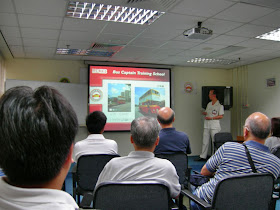Recently, I have read an article entitled “
Channelling Creativity”
(1) which stated the way to create the future in an organization through a standard to guide innovation management. In the article, the author introduced the standard BS 7000-1:2008 “Design Management System – Part 1: Guide to management innovation” and the key objective was to extend readers’ perspectives beyond technical innovation on products.
Let’s review some definitions of related terms below
(2).
Creation: an original product of human invention or imagination
Creativity: the main tool to develop innovation
Discover: to be the first to find or observe a place, substance, or scientific phenomenon
Invent: to design and/or create something which has never been made before
Innovation can be defined as:
· the act of something new
· something newly introduced
· implementing new ideas to create value
· a contrary to established customs
The distinction between “Invention” and “Innovation” is that invention is the creation of a new idea or concept, and innovation is turning the new concept into commercial success or widespread use.
Another famous term will be correlated to Creativity / Innovation is
TRIZ (The Theory of Inventive Problem Solving”. The father of TRIZ is Genrich Altshuller. He born in the former Soviet Union and joined the Army during World War II. After the war, he was assigned to the Navy as an inspector of inventing, a job which he saw as an opportunity to help inventors find creative solutions to technical problems. He studied 200,000 patents and selected 40,000 patents as representing the most effective solutions. He found that evolution of an engineering system is not a random event, but governed by certain patterns. TRIZ has Altshuller’s 39 parameters and 40 principles
(3).
Genrich Altshuller said “My only intention in this book is to show that the process of solving technical problems is accessible to anyone, important to learn, and very exciting to work through”
(4).
After reading Altshuller’s book, it is observed the application on TRIZ requires people with strong fundamental scientific knowledge (especially physics and chemistry) so as to use its methodology to solve different problems.
The standard BS 7000-1:2008 (Design Management System – Part 1: Guide to management innovation) gives guidance specifically in the design and development of innovative and competitive products that satisfies customers’ perceived needs and aspirations in the long-term future
(5).
There are 16 stages to managing innovation at the organizational level as follows:
Stage 1) Review current innovation practices to determine potential for improvement
Stage 2) Create future vision
Stage 3) Draw up mission statement relating to innovation
Stage 4) Distil innovation objectives and strategies from organization’s overall objectives and strategies
Stage 5) Determine the innovation highway
Stage 6) Plan introduction of new approach to innovation
Stage 7) Communicate essence of innovation mission, objectives and strategies
Stage 8) Promote an innovation-nurturing culture
Stage 9) Reinforce infrastructure and expertise to manage innovation
Stage 10) Draw up master innovation programme
Stage 11) Implement programme and support new approach to innovation
Stage 12) Evaluate progress and contribution of master innovation programme
Stage 13) Build distinctive competencies and competitive advantage through innovation
Stage 14) Document, share, publicize and celebrate achievements through innovation
Stage 15) Enhance organization’s reputation through innovation
Stage 16) Review and refine overall approach to innovation
It can be interpreted as organizational innovation management (OIM). OIM is addressed as a kind of managerial method, which provides an organization with an underlying momentum for innovation, encouraging and facilitating the development of inventive ideas from an organization-wide perspective.
Creativity / Innovation can be generated from two situations. One can be produced from systematic approach such as OIM, TRIZ, BS 7000-1, and the other created from chaotic circumstances such as illumination (洞悉) and Eureka (頓悟). (
Eureka means “I’ve found it!” in Greek.)
A great idea for creativity / innovation could be a common or simple thought. Sometimes, it could also be irrational, unsafe and unacceptable.
I like to quote Albert Einstein’s statement to conclude the creativity:
“Everything should be made as simple as possible, but not simpler.” Reference:
(1) Alan Topalian (2009) “Channelling Creativity”, QualityWorld (www.thecqi.org), Vol 35, Issue 6, pp.28 – 31.
(2) 方勵行 “Introduction to Innovation Management”
(3) John Terninko, et al. (1998) Systematic Innovation: An Introduction to TRIZ, CRC Press LLC.
(4) Genrich Altshuller (translated by Lev Shulyak) (1996) And Suddenly the Inventor Appeared – TRIZ, the Theory of Inventive Problem Solving, Technical Innovation Center, Inc.
(5) BS 7000-1:2008 “Design Management System – Part 1: Guide to management innovation”









